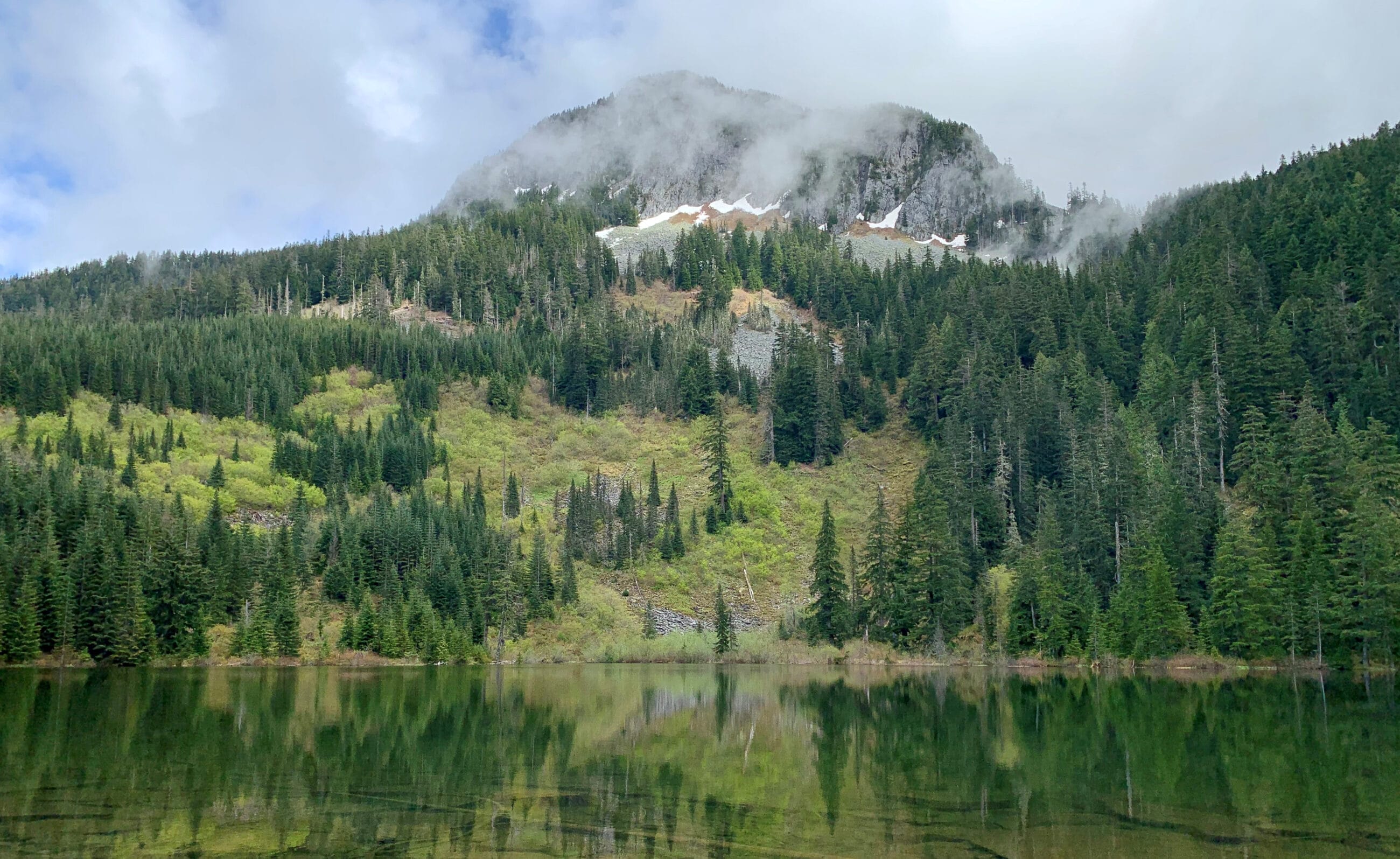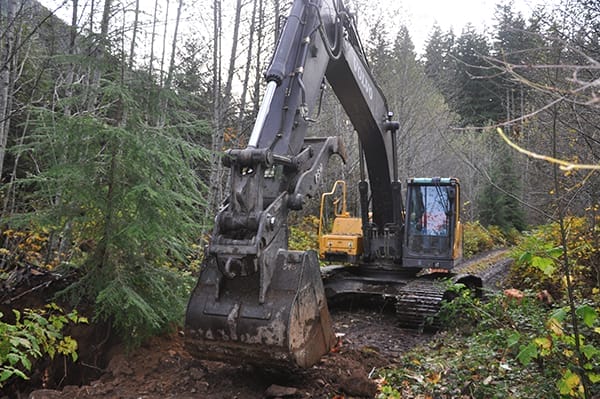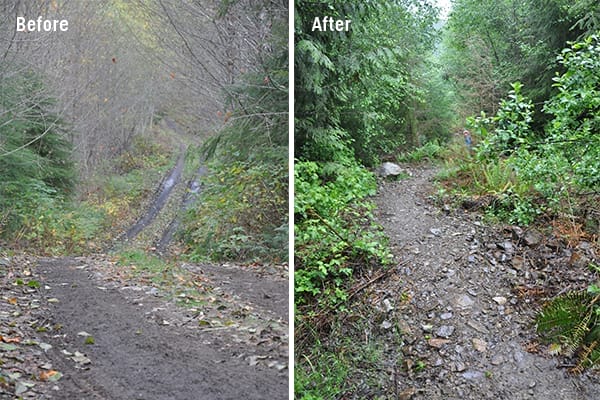A Story of Collaboration: Looking Back on the Granite Creek Road-to-Trail Project
Looking back on how the Granite Creek trail came to be, starting with a road decommissioning effort
Northeast of the ever-popular Mailbox Peak Trail in the Middle Fork Snoqualmie Valley you’ll find the lesser-known, but equally special, Granite Creek Trail. Passing through a lush forest of second-growth hemlock, alder, Douglas fir, and cedar, you’ll enjoy the sights and sounds of the roaring Granite Creek. Marvel at just how green everything is around you with abundant moss and sword ferns as far as the eye can see. The forest is bursting with so much life, it’s hard to imagine that this trail started out as an old logging road.
Every trail has a story. The story of Granite Creek is one of collaboration and multiple layers of mutual benefit. This success story demonstrates what is possible when we all work together to care for this special place while balancing multiple interests for the benefit of all.
Tackling a Shared Challenge in the Middle Fork Snoqualmie Valley
Since 1997, the Mountains to Sound Greenway Trust has worked with a broad coalition of partners to collaboratively restore the Middle Fork Snoqualmie Valley, conserve lands for public ownership, and improve public access to an area once plagued by illegal dumping, target shooting, and generally unsafe conditions.
The Granite Creek Basin includes a patchwork “checkerboard” of land ownership by both the USDA Forest Service (USFS) and the Washington State Department of Natural Resources (DNR), and both organizations found themselves with the shared challenge of decommissioning an extensive road network within the basin. Doing so would not only eliminate the maintenance needs and costs associated with the roads, but also reduce the environmental impacts associated with degraded forest roads (including erosion, increased sedimentation in nearby waterways, and habitat fragmentation including blocking fish access and passage with undersized or “perched” culverts) and increase the number of recreational opportunities in the region.
Removing Roads to Make Way for Recreation and Habitat Restoration
In 2012, with funding from the National Forest Foundation (NFF) and DNR, the Greenway Trust and heavy equipment operators from McClung Construction worked collaboratively with USFS and DNR to remove the final 11 miles of roads in the Granite Creek Basin. Six of those road miles were converted into trails, providing additional recreational opportunities and access to USFS lands.
The project successfully met many objectives, including:
- Removing nearly 100 culverts.
- Decommissioning a total of 11 miles of deteriorating forest roads.
- Converting six miles of those forest roads to multi-use trails, providing year-round recreational access to two subalpine lakes in the valley.
- Completing the removal and replacement of the Granite Creek Bridge.
- 30+ volunteers contributed nearly 260 volunteer hours, planting 1,000+ bare root conifers along the former road corridor.
Setting the Stage for Future Collaboration
This project was a major success in the regional effort to restore the ecological health of the Middle Fork Snoqualmie Valley and provide sustainable, year-round recreational opportunities and access to the Alpine Lakes Wilderness Area. The Greenway Trust (with NFF’s support), USFS, and DNR pooled resources on this project to complete the decommissioning and trail construction. Since this project’s completion, there have been numerous other efforts that demonstrate this type of collaborative work – including the paving of the Middle Fork Road and the construction of the Granite Creek Trailhead – and it has become ingrained in the way many things are done today. You can still enjoy the Granite Creek Trail to this day thanks to the funding and expertise put forth by these organizations.
There is still more work to be done in this area, including trail/day use improvements at Granite Lakes, and trail upgrades and lakeshore restoration at Thompson Lake. If you’d like to be part of making projects such as these possible in the future, please consider supporting our Middle Fork Snoqualmie Valley Campaign here.








